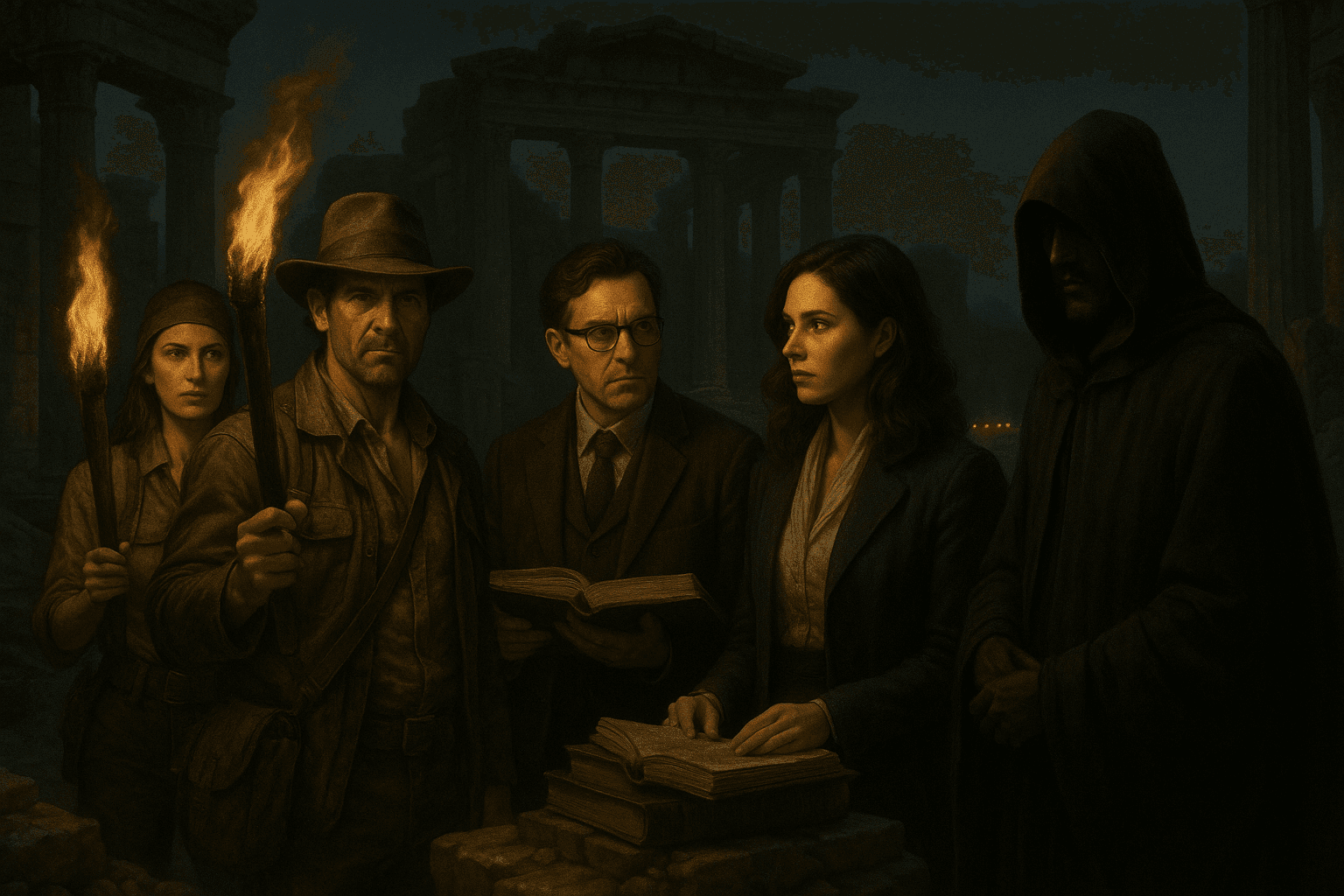Rivals of the Archivian Museum
Every discovery has a shadow. Every relic has a rival.

The Archivian Museum does not walk its path unchallenged. For every artifact recovered, every ruin explored, and every forgotten culture brought into light, there are forces standing in opposition. Some are overt, others subtle, yet all are united in one truth: the past is a battlefield, and knowledge is its most dangerous weapon.
The most immediate rivals are the treasure hunters. They are mercenaries, adventurers, and opportunists who care little for preservation or context. To them, ruins are vaults waiting to be cracked open, relics little more than commodities for the highest bidder. Their methods are crude but effective — explosives where patience would suffice, bribery where diplomacy might open doors, and brute force in place of scholarship. Sometimes, circumstances force uneasy alliances between them and the Field Core, as hostile terrain or awakened dangers demand cooperation. Yet these moments never last. Recklessness is their hallmark, and when dust settles it is often the Museum that must pay the cost for their greed. Their roots stretch back centuries, to grave robbers and battlefield scavengers, making them a perpetual shadow across history.
Standing at the opposite end of the spectrum are the rival scholars. These are not thrill-seekers but respected academics and institutions, cloaked in the authority of universities and museums with long pedigrees. Their rivalry is not waged with swords or dynamite, but with publications, lectures, and the cutting words of reputation. To them, the Archivian Museum is an interloper, an unrecognized body undermining the established order of academic recognition. They fund expeditions under banners of research, but their goals are often political — to discredit the Museum, to control access to sites, to ensure discoveries bear their name rather than another’s. In their eyes, history belongs to those who publish it first, even if dangerous truths are omitted. Their rivalry is not marked by blood, but by careers ruined and truths reshaped, which can wound just as deeply.
From the shadows emerge the secret societies, whose motives are older and more enigmatic. They do not seek fortune or prestige, but control — whether through concealment, ritual devotion, or manipulation of knowledge that others would unleash without care. These groups have worn many faces across the ages: templar-like orders, occult sects, clandestine lodges of the powerful. Some genuinely believe that the truths buried in artifacts and ruins must never be revealed, fearing catastrophic consequences. Others lust for the power these secrets could grant. Their methods are insidious: infiltration, ritual sabotage, coded texts that steer expeditions astray. Unlike treasure hunters or scholars, they rarely reveal themselves openly. They prefer to manipulate, turning the Field Core into unwitting pawns or drawing them toward traps set centuries before. Against them, victory often feels hollow, for even success may serve the society’s greater plan.
Perhaps the most formidable adversaries are corporations and governments. These powers cloak themselves in legitimacy, wielding resources the Museum cannot hope to match. With soldiers, scientists, and budgets dwarfing those of a single institution, they conduct massive excavations under the guise of preservation or national pride. Artifacts become bargaining chips in political games, relics transformed into symbols of dominance or experimental weapons. Some governments seize discoveries under claims of national security, while corporations view relics as intellectual property to be patented, commercialized, or hidden away. The Field Core often finds itself in impossible situations: cooperate to save lives or resist and risk being crushed under overwhelming force. Unlike hunters or scholars, these rivals can be both patrons and enemies, their allegiance shifting with politics and profit.
Together, these rivals form a gauntlet the Archivian Museum must endure. Each represents a different face of humanity’s hunger for the past: greed, pride, fear, and power. To the Museum, relics are fragments of truth, threads that weave together the story of civilization. To its rivals, they are something else — prizes to be seized, secrets to be buried, or weapons to be unleashed. And so, every journey into forgotten ruins is never just an expedition. It is a contest of wills, where the past is claimed not by those who discover it first, but by those who dare to hold it longest.
